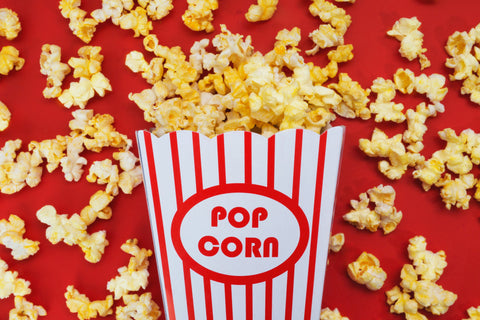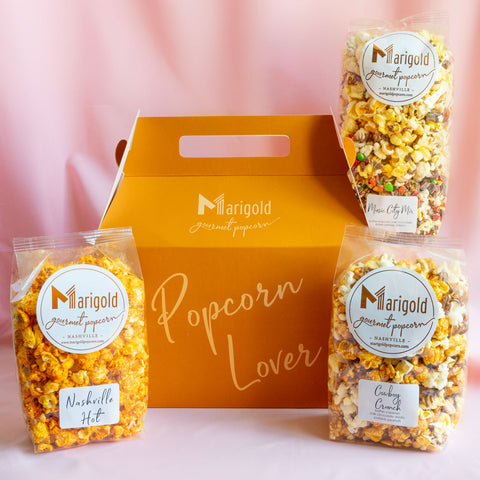Popcorn is one of those snacks you can’t resist, whether at the movies or curled up on the couch. But have you ever wondered what makes those fluffy, crunchy kernels pop? It’s not just any corn that turns into popcorn—it’s a special variety with some unique properties.
At its core, popcorn comes from a specific type of maize known as Zea mays everta. Its hard outer shell and starchy interior set it apart, which play a crucial role in creating that satisfying pop. With just a little heat, this humble kernel transforms into the delicious popcorn flavors you know and love..
Understanding what popcorn is made of satisfies your curiosity and gives you a deeper appreciation for this simple yet fascinating snack. So, let’s dive into what makes popcorn so unique and how it goes from kernel to crunchy perfection.
What Is Popcorn Made Of?
Popcorn consists of kernels from Zea mays everta, a specific variety of maize. Each kernel has three main components: the pericarp (outer shell), the germ (reproductive part), and the endosperm (starchy interior). These elements work together to create popcorn's unique ability to pop.
The pericarp is non-porous and primarily composed of cellulose. It traps moisture inside the kernel during heating. The germ contains oil and nutrients, while the endosperm houses starch, which expands and gelatinizes under high heat. The combination of moisture, starch, and oil within the sealed pericarp makes popcorn distinct from other types of maize.
The Anatomy Of A Popcorn Kernel
Each popcorn kernel contains three distinct parts—endosperm, pericarp, and germ—that work together to create its popping ability.
Endosperm
The endosperm makes up most of the popcorn kernel and is rich in starch. This starchy interior stores the energy required for the kernel's transformation. When exposed to heat, the moisture trapped within the starch gelatinizes and expands rapidly. This expansion creates the fluffy texture associated with popcorn once the kernel bursts.
Pericarp
The pericarp is the kernel's outer shell, also known as the hull. Composed of cellulose, this non-porous layer traps the internal moisture, ensuring pressure builds as the kernel heats. Its strength and durability are essential for maintaining the sealed environment needed for popping. Once the pressure exceeds the pericarp's capacity, the kernel bursts open, producing the popcorn.
Germ
The germ is the smallest part of the kernel, located at its core. It contains vital oils, nutrients, and genetic material for the growth of new plants. The oil found in the germ aids the popping process by contributing to heat distribution within the kernel. While small, the germ plays an essential role in creating the signature texture and flavor of popped popcorn.
The Science Behind Popcorn's Popping Ability
Popcorn's ability to pop stems from the interaction between its unique structure and physical processes. Moisture, heat, and pressure work together to transform a kernel into the light, airy snack you enjoy.
Role Of Moisture
Moisture inside popcorn kernels is essential for popping. Each kernel typically contains 13-14% water stored in the starchy endosperm. As the kernel heats, the water turns into steam, causing the starch to gelatinize and expand. If a kernel's moisture content is too low, it won't generate enough pressure for a successful pop, while excessive moisture can cause uneven popping or burning.
Heat And Pressure
When heated to approximately 356°F (180°C), the moisture inside the kernel generates steam, increasing internal pressure. The non-porous pericarp seals the steam until the pressure reaches around 135 psi, causing the kernel to burst. The starch and proteins inside expand rapidly upon release, forming the fluffy popcorn texture. This mechanism explains why consistent heating is critical for even popping.
Common Ingredients And Additives In Popcorn
Popcorn's appeal is often enhanced by various ingredients that add flavor and texture. These elements complement the natural taste of popped kernels, creating the snack's widespread popularity.
Oil And Butter
Oil and butter are primary ingredients used during or after popcorn preparation to enhance flavor and texture. Oil serves as a heat conductor, ensuring even cooking and reducing the risk of burning. Commonly used oils include coconut, canola, and sunflower. Butter, often added after popping, enriches the flavor with its creamy profile. Clarified butter is sometimes preferred to avoid sogginess caused by water content in regular butter.
Salt And Flavorings
Salt is the most common additive, emphasizing the natural taste of popcorn by balancing its mild sweetness with a savory touch. Specialty salts, like sea salt or flavored salts (e.g., garlic or truffle), are often used for variety. Flavorings range from sweet options like caramel and chocolate to savory ones, such as cheese, barbecue, or kettle popcorn.
At Marigold Popcorn, we carefully select the finest ingredients to craft monthly flavors that elevate your snacking experience. Every batch is made with quality, taste, and freshness in mind, ensuring a delicious treat for any occasion.
Fun Facts About Popcorn
-
Oldest Snack Food: Popcorn dates back over 5,000 years. Archaeologists discovered ancient popcorn remnants in Peru, displaying how long this snack's been enjoyed.
-
Naturally Gluten-Free: Popcorn, being 100% whole grain and derived from maize, is free of gluten, making it a versatile option for gluten-sensitive diets.
-
Pops Due to Pressure: Each kernel pops when internal pressure reaches about 135 psi. This is due to trapped moisture turning into steam, which causes the explosion.
-
Unique among Corn Varieties: Only Zea mays everta, a specific kind of maize, pops. Its hard pericarp and starchy interior are essential for the process.
-
Low-Calorie Base: Air-popped popcorn contains approximately 30 calories per cup, without added butter or oil, making it a healthy snack option.
-
Unpopped Kernels Have a Name: Unpopped kernels are termed "old maids", referring to their inability to burst due to insufficient moisture.
-
Flavor Versatility: From basic salt to caramel and cheese, popcorn adapts easily to sweet or savory popcorn enhancements, catering to a broad range of preferences.
-
Global Popularity: The US leads in popcorn consumption, eating about 15 billion quarts annually. This equates to nearly 47 quarts per person per year.
Key Takeaways
-
Popcorn is made from a specific maize variety called Zea mays everta, known for its unique ability to pop due to its hard outer shell and starchy interior.
-
Each kernel consists of three main components: the pericarp (outer shell), the endosperm (starch-rich interior), and the germ (nutrient and oil source).
-
Popcorn pops when internal moisture turns to steam under heat, creating pressure inside the kernel until it bursts.
-
Proper moisture content (around 13-14%) is crucial for successful popping, while consistent heating ensures even results.
-
Commonly added ingredients like oil, butter, and salt enhance popcorn's flavor and texture, making it a versatile snack.
-
Popcorn is naturally gluten-free, low in calories when air-popped, and can be enjoyed with a variety of sweet or savory flavorings.
Conclusion
Popcorn is more than just a tasty snack; it's a fascinating blend of science, history, and flavor. Its unique structure and popping process set it apart from other grains, making it a staple in kitchens and movie theaters alike. Whether you enjoy it plain, buttered, or coated in your favorite seasoning, popcorn continues to captivate with its versatility and charm.
Next time you reach for a bowl, you'll have a deeper appreciation for the remarkable journey each kernel takes to become the fluffy treat you love.
Why settle for ordinary when you can indulge in fresh, gourmet popcorn from Marigold Popcorn? Whether you're craving classic buttery goodness or bold, unique flavors, we have something for every taste.
Treat yourself today—Order delicious and crunchy popcorn from us today and experience the perfect crunch in every bite!
Frequently Asked Questions
What makes popcorn unique compared to other types of maize?
Popcorn is unique because it is derived from a specific variety called Zea mays everta. Its structure includes a hard, non-porous outer shell (pericarp) and a starchy interior. This combination allows it to trap moisture and pop under heat, unlike other types of maize.
Why does popcorn pop?
Popcorn pops due to the moisture inside its kernel. When heated, the moisture turns to steam, causing the starch to expand. The pressure builds up inside the hard pericarp until it bursts, transforming the kernel into a fluffy snack.
What is the ideal temperature for popping popcorn?
The ideal temperature for popping popcorn is approximately 356°F (180°C). At this temperature, the moisture inside the kernel turns to steam and creates the pressure needed to make the kernel pop.
Why do some kernels not pop?
Kernels that do not pop, often called "old maids," usually lack the necessary moisture content (13-14%). Without sufficient moisture, these kernels cannot generate enough steam to create internal pressure for popping.
What are the main components of a popcorn kernel?
A popcorn kernel consists of three main parts: the pericarp (outer shell), the germ (nutrient-rich part with oil), and the endosperm (starchy interior). The endosperm is crucial for the fluffy texture, while the germ adds oil and nutrients, and the pericarp traps moisture.
Is popcorn gluten-free?
Yes, popcorn is naturally gluten-free. This makes it an excellent snack option for people with gluten sensitivities or celiac disease, as long as no gluten-containing additives are used.
How many calories does air-popped popcorn contain?
Air-popped popcorn is a low-calorie snack, containing approximately 30 calories per cup. It is a healthy choice for those looking for a light, satisfying snack option.
What are common ingredients used with popcorn?
Common ingredients for popcorn include oil, butter, and salt. Oil helps conduct heat during popping, butter enhances flavor, and salt adds a savory balance. Other popular flavorings include caramel, cheese, and spices.
Can any type of corn be used to make popcorn?
No, only Zea mays everta can produce popcorn. This specific variety of maize has the unique structure required for popping, including the hard pericarp and starchy interior.
How much popcorn is consumed in the US annually?
In the United States, around 15 billion quarts of popcorn are consumed annually. This amounts to about 47 quarts per person each year, highlighting its popularity as a snack food.
What happens if the moisture content in popcorn is too high or too low?
If popcorn contains too little moisture, it won’t pop properly. If the moisture is too high, it can result in uneven popping or burnt kernels. The ideal moisture content for popping is 13-14%.
What are some fun facts about popcorn?
Popcorn is one of the oldest snacks, dating back over 5,000 years. It’s naturally gluten-free, only Zea mays everta can pop, and unpopped kernels are called “old maids.” It’s also incredibly versatile, with flavors ranging from salty to sweet.




